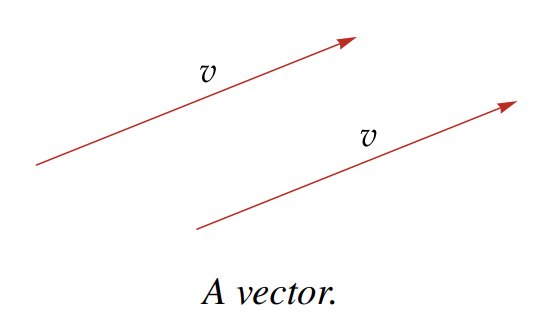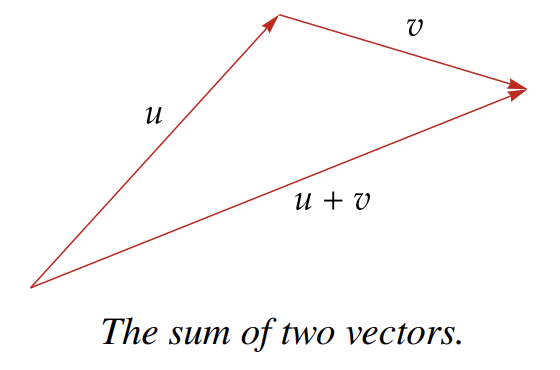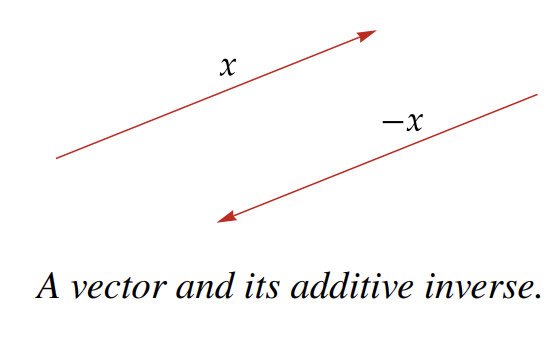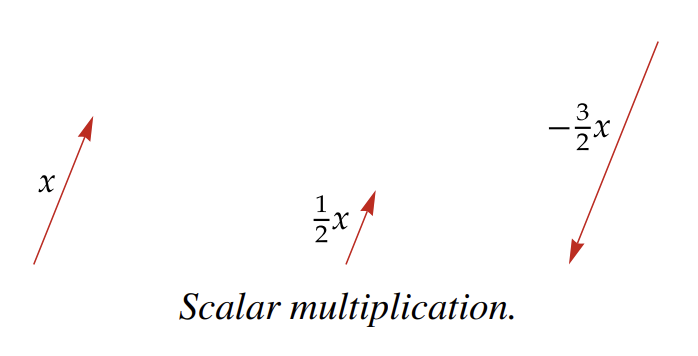To define the higher-dimensional analogues of and , we will simply replace with (which equals and as defined here), and replace and with an arbitrary positive integer.
We define to be the set of all lists of length of elements of :
For and , we say that is the th coordinate of .
Example: 4D complex space
For example is the set of all lists of four complex numbers:
If , we cannot visualize as a physical object. Similarly, can be thought of as a plane, but for , the human brain cannot provide a full image of . However, even if is large, we can perform algebraic manipulations in as easily as in or .
Addition
For example, we can define addition in is defined by adding corresponding coordinates:
We can simplify the notation to just use one letter, such as just and instead of using and .
- If a single letter is used to denote an element of , then the same letter with appropriate subscripts is often used when coordinates must be displayed.
- For example, if , then letting equal is good notation, as shown in the proof below.
- Even better, we will work with just and avoid explicit coordinates when possible.
Proof: Commutativity of addition
If , then .
Suppose that and . Then
where:
- the second and fourth equalities holds because of the definition of addition in
- the third equality holds because of the usual commutativity of addition in .
Q.E.D.
Definition of Zero
Let denote the list of length whose coordinates are all :
- On the left side, the symbol denotes a list of length , which is an element of .
- On the right side, each denotes a number.
Geometric Intuition
A typical element of is a point . Sometimes we think of not as a point but as an arrow starting at the origin and ending at , as shown here. When we think of an element of as an arrow, we refer to it as a vector.

When we think of vectors in as arrows, we can move an arrow parallel to itself (not changing its length or direction) and still think of it as the same vector. With that viewpoint, you will often gain better understanding by dispensing with the coordinate axes and the explicit coordinates and just thinking of the vector, as shown in the figure here.

- The two arrows shown here have the same length and same direction, so we think of them as the same vector.
Whenever we use pictures in , or use the somewhat vague language of points and vectors, remember that these are just aids to our understanding, not substitutes for the actual mathematics that we will develop. Although we cannot draw good pictures in high-dimensional spaces, the elements of these spaces are as rigorously defined as elements of .
For example, is an element of , and we may casually refer to it as a point in or a vector in , without worrying about whether the geometry of has any physical meaning.
Geometric Intuition for Addition
Recall that we defined the sum of two elements of to be the element of obtained by adding corresponding coordinates. As we will now see, addition has a simple geometric interpretation in the special case of .
Suppose we have two vectors and in that we want to add. Move the vector parallel to itself so that its initial point coincides with the end point of vector , as shown here. The sum then equals the vector whose initial point of and whose end point equals the end point of , as shown here.

Additive Inverse
We can continue to define more operations in , and look at the accompanying geometric interpretation in .
Definition: Additive Inverse
For , the additive inverse of , denoted by , is the vector such that
Thus, if , then .
Geometrically, the additive inverse of a vector in is the vector with the same length but pointing in the opposite direction.

Scalar Multiplication
Scalar multiplication will be central to our subject. Specifically, we need to define what it means to multiply an element of by an element of .
Definition: Scalar Multiplication
The product of a number and a vector in is computed by multiplying each coordinate of the vector by :
Here, and .
Scalar multiplication has a nice geometric interpretation in . If and , is the vector that points in the same direction as and whose length is times the length of . In other words, to get , we shrink or stretch by a factor of , depending on whether or .
If and , then is the vector that points in the opposite direction to that of and whose length is times the length of .
